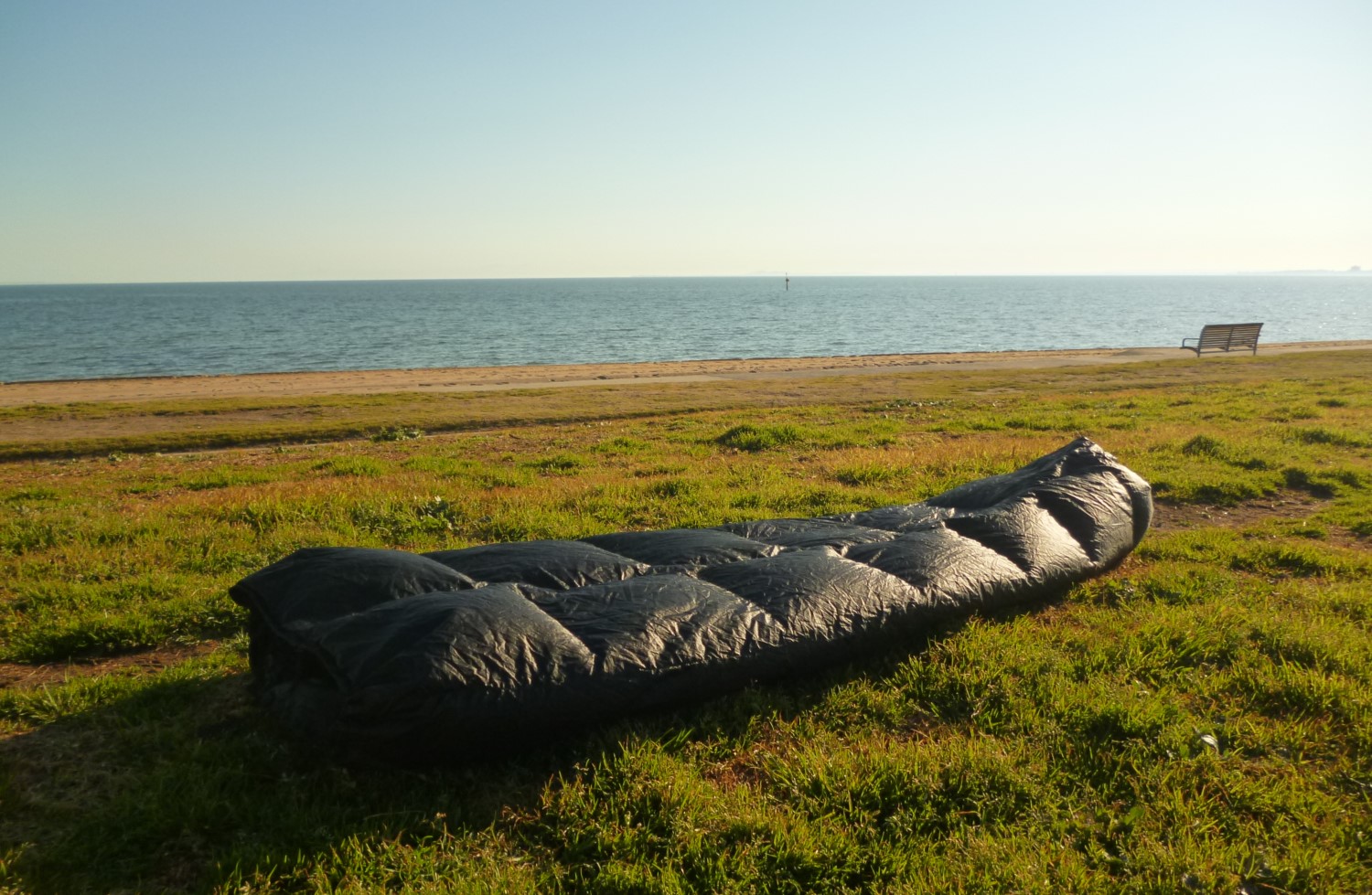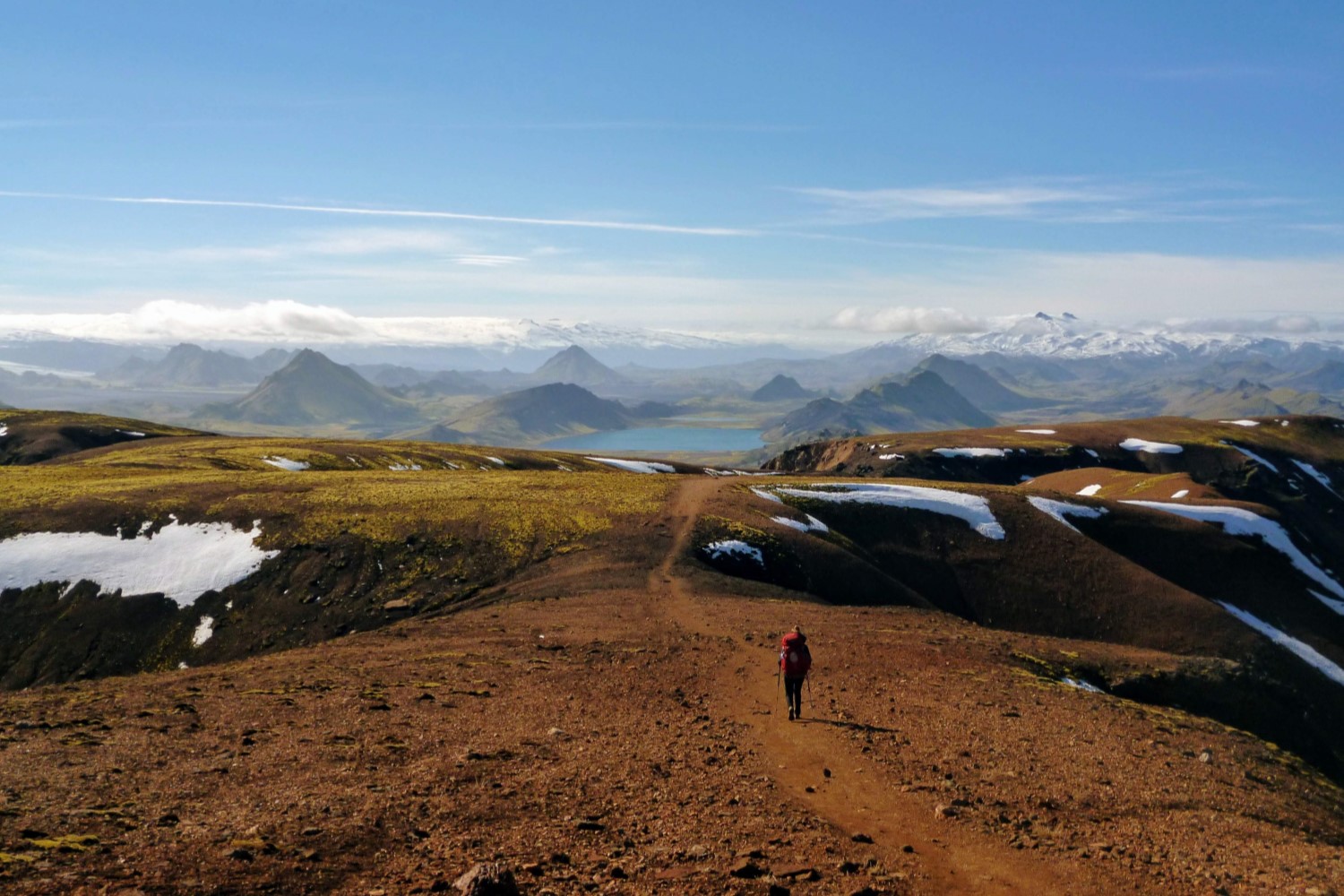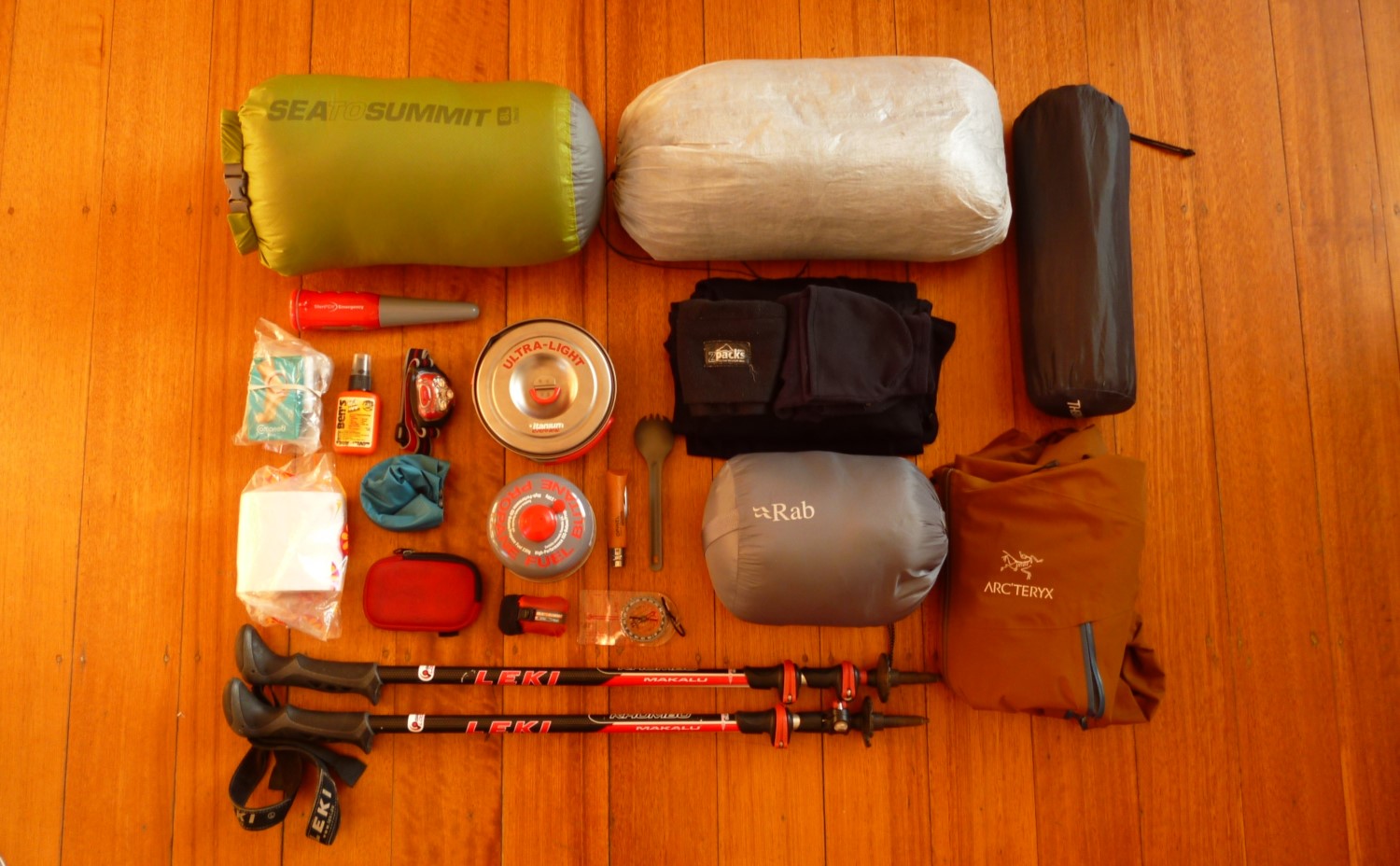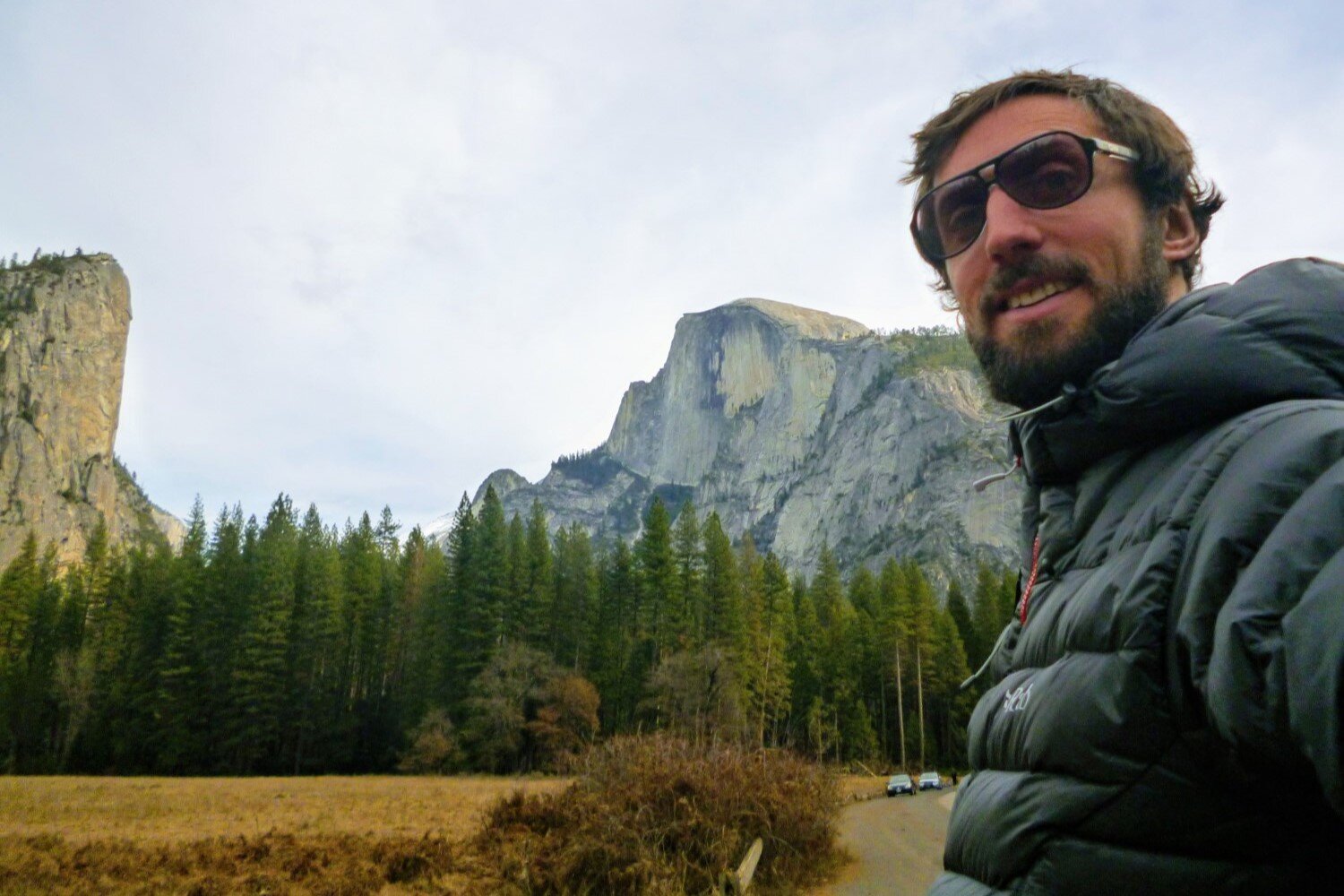Best Hoodless Sleeping Bags of 2023
JUMP TO: FEATHERED FRIENDS FLICKER / ENLIGHTENED EQUIPMENT CONVERT / ZPACKS CLASSIC / BUYING ADVICE
Author: Sam Brilleman
The Short Version
The Long Version
As a front and side sleeper, I used to get sick of being tangled in my sleeping bag hood. So when I stumbled across hoodless sleeping bags it was like a lightbulb moment. Why even bother with a hood? Why not just wear a warm hat if it gets cold?
Hoodless sleeping bags are more versatile, comfortable and lightweight than their hooded counterparts. In short, a hoodless sleeping bag is great for front, side or restless sleepers who find themselves getting tangled in the hood of a traditional bag. We find them more comfortable than a traditional bag, owing to their somewhat more "symmetrical" design.
In many climates a hoodless sleeping bag will be warm enough as-is. However in cold conditions you may need to wear a warm hat, a hooded down jacket, or use a detached goose down hood. Once the temperature really drops, for example below freezing (~32°F or 0°C), we usually opt for a traditional sleeping bag with a connected hood since it works better at preventing cold drafts.
Note that for even more freedom of movement, consider an ultralight backpacking quilt. Some of the designs below are like a quilt / sleeping bag hybrid. However, a true backpacking quilt does not have a zip along it's entire length. Quilts can be much more comfortable for side and restless sleepers, owing to the extra girth, and work well for temperatures above freezing.
If you love reading this gear review article, then you'll likely love reading our other gear-fiend related articles:
MANUFACTURER TEMP RATING: 20°F / -7°C
FILL POWER: 950+
FILL WEIGHT: 14.7 oz / 417 grams
TOTAL WEIGHT: 26 oz / 743 grams
PROS: Ultralight, Draft collar, Opens up as a blanket
CONS: No obvious ones
BEST FOR: Ultralight backpackers, Those who get tangled in sleeping bag hoods, Those who want versatility
For those looking for versatility in their sleeping bag, then the Feathered Friends Flicker 20 UL is hard to beat. The Flicker can be opened up as a blanket on warmer nights, while in colder temps it can be zipped up and the bottom of the footbox cinched in to form a tapered hoodless sleeping bag.
A novel crossover zipper design helps seal off any drafts along the length of the bag and avoids the need for a down-filled draft tube. When the footbox is cinched in at the bottom, your feet will be cosy in all but the coldest conditions.
The Flicker 20 UL is made with the highest quality goose down (950+ fill power). As with all Feathered Friends sleeping bags, the Flicker is conservatively rated. You'll find the Flicker 20 UL warm and cosy for a 20°F rated bag. The Flicker includes a draft collar, which means it is easier to retain warmth in colder conditions compared to a bag without a draft collar. Nonetheless to push this bag down towards it's temp rating (e.g. below freezing) you will need to pair it with a warm hat, or a down hood.
The Flicker 20 UL is made with a 10 denier water-resistant outer shell fabric and a 15 denier liner fabric, ensuring optimal weight savings without sacrificing durability. Feathered Friends do not allow customisation, however they do sell an alternative version of the Flicker known as a “YF” version (instead of “UL”). Compared to the Flicker 20 UL, the Flicker 20 YF has a slightly heavier shell fabric (20 denier) and the same fill weight but of a slightly lower fill power down (900+). This results in a bag that is about 1 oz (20 grams) heavier and slightly cheaper.
If you want a hoodless sleeping bag for three-season use then the Feathered Friends Flicker 20 UL is our top choice.
MANUFACTURER TEMP RATING: 20°F / -7°C
FILL POWER: 850 (950 also available)
FILL WEIGHT: 15.4 oz / 437 grams
TOTAL WEIGHT: 23.9 oz / 676 grams
PROS: Ultralight, Can be used as a sleeping bag, quilt, or blanket, Customisable
CONS: No draft collar
BEST FOR: Ultralight hikers, Those who want versatility, Those on a budget
The Enlightened Equipment Convert 20° is a great hoodless sleeping bag for hikers who want to minimise their base weight. It includes a pad attachment system that means it can be used in just the same way as Enlightened Equipment's backpacking quilts. Nonetheless, it also includes a full zip, which means it can also be used an enclosed sleeping bag.
It is great for those hikers who want to try a quilt for the first time, with a true quilt-style pad attachment system, but also want to retain the security of having an enclosed sleeping bag for if they need it.
The 850 fill power down option also means that this hoodless sleeping bag is slightly cheaper than some of the competition such as the Feathered Friends Flicker or the Zpacks Classic. However, as with all Enlightened Equipment sleeping bags and quilts, you can opt for a higher quality - and more expensive - 950 fill power down which in fact puts all of our top rated hoodless sleeping bags on the same playing field, cost-wise.
One thing we love about Enlightened Equipment gear, is that almost everything is customisable. So in addition to being able to choose the quality of the down fill, you can also choose the shell and liner materials. The default option is a 10-denier ripstop nylon. But, 7-denier or 20-denier options are available for those who want to reduce the weight further or want additional durability and water resistance. You can also choose from a wide range of fabric colours. The one downside of the customisation is that it will lead to longer wait times (usually around 3-5 weeks).
We like the cosy feel of a draft collar, so overall we think the Feathered Friends Flicker has a slight edge over the Enlightened Equipment Convert in terms of comfort. However, the Convert is available in a much wider range of temperature ratings (-10° through to 50°F) compared to the Flicker (20° through to 40°F). And for a given temperature rating, the Convert is a lighter bag overall (e.g. with the 950 fill power, the 20°F rated Convert is about 100 grams lighter than the 20°F rated Flicker).
So although we think the Feathered Friends Flicker is a slightly nicer hoodless sleeping bag overall, we recommend the Enlightened Equipment Convert to hikers who are trying to minimise their base weight to the lowest value possible.
MANUFACTURER TEMP RATING: 20°F / -7°C
FILL POWER: 900+
FILL WEIGHT: 13.7 oz / 388 grams
TOTAL WEIGHT: 20.0 oz / 568 grams
PROS: Ultralight, Dry sack included
CONS: No draft collar, Flat foot box
BEST FOR: Ultralight backpackers
The Zpacks Classic Sleeping Bag is an ultralight hoodless bag made with 900+ fill power goose down. Although not quite as warm as some other 20°F rated sleeping bags, this ultralight bag does pack in a lot of warmth for how much it weighs.
Zpacks use a 10-denier ripstop nylon for both the inner liner and outer shell. Their default design include a 3/4 length zip with no draft tube. This provides weight savings compared with a full length zipper and draft tube. With no draft tube, Zpacks suggest the user sleeps on top of the zipper to prevent drafts entering along the main body of the bag. But positioning the zipper underneath your body only works if you do not toss and turn during the night.
If you are a restless sleeper, or plan to use the bag in a wide range of climates, consider switching to their Full Zip Sleeping Bag which includes both the full zip and a draft tube. This will add about 3.2 oz (90 grams) of weight but it will increase the versatility of the bag; a draft tube helps preserve warmth in colder temps, and the full zip means you can open the bag up on warmer nights.
The top of the Zpacks bag can be cinched in around your neck using the drawcord, and is secured using a flat clip. In minimising the weight of this ultralight bag, Zpacks chose not to include a draft collar. Some people they may find this minimalist design less comfortable and cosy than a full draft collar like found on the Feathered Friends Flicker or Katabatic Gear Alsek.
Finally, one great perk of purchasing a Zpacks sleeping bag is that they all come with an ultralight waterproof roll-top dry sack.
BUYING ADVICE FOR HOODLESS SLEEPING BAGS
Life without a hood
The first and most obvious thing to ask when transitioning to a hoodless bag is:
“How will I survive without a hood?”
Personally, I hate sleeping bag hoods. Being predominantly a front and side sleeper I just get tangled in any sleeping bag hood that is fixed in place. Nonetheless there are three potential benefits to a traditional sleeping bag hood:
Warmth.
Stopping your face sticking to your sleeping pad.
Absorbing drool that would otherwise pool on your non-absorbent sleeping pad.
To deal with the first issue, I wear a fleece hat if it gets cold. In most temperatures a fleece hat isn’t even necessary. If you find you sleep really cold, then a down jacket with a hood, or a detached goose down hood are viable options.
To deal with the second and third issues I use a backpacking pillow and sometimes even a Therm-a-Rest sheet. Although, the Therm-a-Rest sheet is a bit of a luxury. The sheet is useful in warm weather when you might not be wearing baselayers and your sleeping bag might be unzipped (similar to a backpacking quilt). In colder weather, the option to wear baselayers or zip up your sleeping bag make a sheet unnecessary.
Temperature ratings
Since the early 2000’s a standardised rating system for sleeping bags has existed — you can read about it in our sleeping bag buying advice. In short, the most recent version of the rating system is known as an ISO rating. An ISO comfort rating provides an indication of the temperature an individual may realistically expect to use their sleeping bag in… and still remain comfortable. The ISO rating is not determined by the manufacturer, instead it is determined at an independent testing lab.
However, getting sleeping bags ISO rated is expensive. Many smaller “cottage” companies are not willing to pay for this expense. Additionally it is unclear whether the ISO rating standard applies to hoodless sleeping bags in any case.
None of the hoodless sleeping bags in our list have been ISO rated. This means that the only available temperature ratings are those published by the manufacturer. Of course manufacturer temperature ratings are generally over-optimistic (one of the reasons why the ISO standard was introduced!). In general consider adding 20°F to the manufacturer temperature rating. For example, a 20°F (-7°C) degree rated bag is likely to be comfortable down to about 40°F (4°C) degrees. Below that we believe you would need to be adding warmth by wearing an insulating jacket, for example.
Down fill power
High quality goose down provides much better warmth for weight compared with synthetic insulation or lower quality down. The metric used to determine the quality of the down is known as “fill power” — it is a measure of how much volume (in cubic inches) each ounce of down will occupy. You can read more about it in our sleeping bags buying advice.
In short, the higher the fill power of the down the better the warmth for weight. But of course higher fill power down comes with a higher price tag. Aim for a down bag with the highest fill power that falls within your budget.
Shell fabrics
The use of innovative lightweight fabrics for the shell and liner can provide significant weight savings. Look for bags made with a ripstop nylon in the range of 10 to 15 denier. These ultralight fabrics provide enough durability for a bag that is well looked after, whilst also providing significant weight savings.
If durability is a concern for you — e.g. you regularly sleep out on rough terrain — then consider a bag with a slightly heavier outer shell fabric, e.g. 20 denier.
Cut & design features
Depending on your preferences, you may be able to make significant weight savings by choosing a sleeping bag with specific design features. For instance:
A tapered mummy bag will be lighter than an otherwise equivalent (semi-)rectangular bag. All of the hoodless sleeping bags in our list are tapered.
A backpacking quilt will generally be even lighter than a hoodless sleeping bag and can also be more versatile. The weight savings come from the lack of need for down in the area that would have been compressed under your body while you sleep.
Do you need a full zip? Perhaps consider sleeping bag with a 1/2 or 3/4 zip over a full length one. But be aware that you might be sacrificing some versatility by being unable to open up the sleeping bag in warmer weather.
A draft tube is an extra baffle, filled with down, that runs along the entire length of the bag behind the zipper. It is used to prevent cold air from entering the bag through the zipper. Some ultralight sleeping bags do not include a draft tube in order to minimise weight. However this means that you must try to sleep on top of the zip to avoid draft (not always an easy task!).
A draft collar is a down filled baffle along the collar of the bag that stops warmth escaping when the top of the bag is cinched in around your neck. This primarily helps with heat retention, but it also feels more cosy.
MORE INFORMATION
If you loved this gear review article, then you'll likely love reading our other gear-fiend related articles:
Happy hiking, and take care out there in the wild!






















